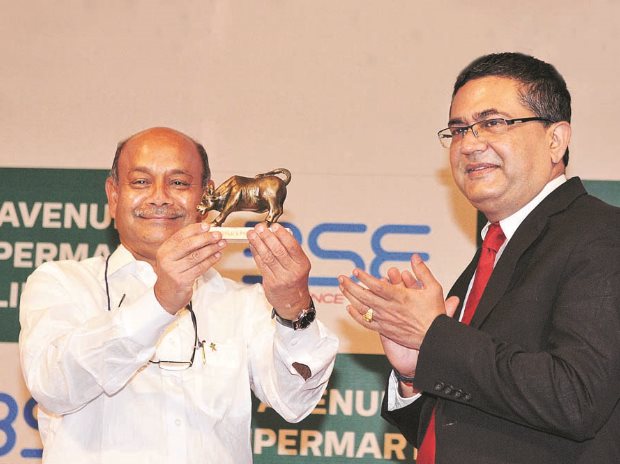Seeds
April 1992, Mumbai
As the financial machinery cracked down on Harshad Mehta’s team after the revelation of the securities scam, a letter from the IT department and countless warnings met his bête noire somewhere in Bombay. A decision had to be made, things could not be the same as before. The center of our tale had made money shorting stocks Mehta had pulled up but had grown tired of the anxiety-driven and stress-inducing life at Dalal Street.
He wasn’t ever like Mehta: no flamboyant clothes and cars nor any interest in having the media follow him. He had largely lived a private life, wearing a white shirt and white pants to work every day, there was something about the world of traders that didn’t interest him enough. He could have all the things that they wanted but knew he wouldn’t be fulfilled. His only connection to the market from that point on would be a young boy named Rakesh who he was training in the trade and the value buys he would hold for a long period. He had decided to move on.
Money isn’t everything, but it is many things when you have spent most of your life without it. Mr. ‘White and White’ found himself close to what he had been searching for since he was 18, close to not having to worry every day about money, something close to freedom, all he now needed was an Avenue of expression.
This is the story of India’s fourth-richest person, who nobody seems to know, and the company he ensured was built.
India’s Walmart
A young boy was arrested when he was trying to measure the distance between aisles in a Brazillian Supermarket. His obsessive nature ensured he became the owner of the world’s largest and most successful offline retail company, Walmart. Radhakishan Damani was inspired by Sam Walton, he started the search for principles that led to Walmart’s success. He had his quirks: he spent days outside shopping stores, weekly bazaars, and Kirana stores to figure out exactly what did the Indian consumer want. It had to pay off.
Two principles that Walmart applied during its most successful days were that of EDLP (Everyday Low Prices) and Cluster-based Expansion. Giving discounts brings people. Cluster-based Expansion is a process by which you specifically focus on particular areas and gain greater market share in every such area before expanding to faraway locations. Lowered Transportation, Warehousing Costs because of area concentration and increased visibility and perception in a local market enables stores to have larger profits.
Avenue Supermarts(D-Mart) took this to heart. You can walk into a D-Mart store and receive a discount regardless of whether it is a special occasion or not. How do they manage this? It involves a very complex process that reduces costs aggressively: no decorations, no advertisements, very little employee costs with no IIM Graduates, and hiring of contract labor in the stores. Besides, they buy goods in bulk from suppliers and here bulk means really large. It is a cycle: the everyday discounts ensure greater customer footfall and then D-Mart uses that to get a Trade Discount on the bulk orders from the suppliers they deal with. This Trade Discount goes back to giving more discounts to the customers. D-Mart is also known to make quick payments to its suppliers: they receive a cash discount for paying back in 5 days whereas Big Bazaar, for example, pays back after 30 days. This cash discount is again used to retain customers for the store.
70% of D-Mart’s Capital Expenditure goes towards opening new stores in existing locations, leaving only 30% for location expansion. With all the popularity and reduced warehousing and transportation costs, they have created for themselves what Bruce Greenwald calls Local Economies of Scale: efficient results onto the investments made in a particular area. The growth and scaling proposition is slowed down because of the focus they have on dominating one place and owning their real estate instead of renting it, but it has ensured positive cash flow for the company. D-Mart is the only major retailer in India that is profitable.

India’s own Mart
But despite all the principles that D-Mart seems to have copied from WallMart and other international chains there is an Indian aspiration that they have captured that no other retail chain or online retailer in India has been able to, and no it is not lower prices.
One specialty that D-Mart has developed is the importance they give to local brands and local dishes, selling Bhakri in Pune, Phaphra in Ahmedabad, and Muthia in Raipur sourced from local famous brands. Even when retailers like Big Bazaar were operating in these cities, people had to go to Kirana stores to buy these local foods, because they were mainly selling the branded foods that were popular nationwide.
This is D-Mart: they are not a retail brand that seeks to give the Indian Tier-2, Tier-3 cities an experience of what it feels like to be in Delhi or Mumbai. The brand is an up-gradation of the local weekly markets. It gives you a similar price, the same products but at the same time the feeling that the development story of India has meant something for you, that you can shop in an organized retail store. There is a signaling mechanism that drives most of the customers to D-Mart and I wonder if this was the major insight Damani developed when he saw local markets and supermarkets in India a decade earlier.
They have understood too that giving too many choices to the Indian customers isn’t going to make sense when the top 3-4 brands in any segment: soaps, shampoos, noodles almost exhaust all of the market share. Having just the most trusted brands on their list of products enables them to move their inventory very quickly. The product catalog and the number of customers they bring in due to lower prices have ensured an inventory turnover ratio of 14 meaning they exhaust their inventory 14 times over in a year, Big Bazaar can do that only 1.4 times in a year. This higher inventory turnover and sales enable them to have greater leverage on the brands making products they sell, they can now ask them for slotting fees and positioning fees- another payment they get from brands and then use them again to lower the prices. This does not happen anywhere in the world.

“Things had changed, Damani was much more relaxed in his role as a mentor to Avenue Supermarts and as a value investor in other companies. But there would be questions in his mind”
Trees
March 2017
Damani took a ride to BSE once again, probably reminiscing the old days when he had first come to Bombay and had entered the ring at the stock exchange. He had started his career as a bear, a short seller on the exchange, but today the chairman of BSE would not let him leave the listing ceremony of Avenue Supermarts without holding a bull.
Things had changed, Damani was much more relaxed in his role as a mentor to Avenue Supermarts and as a value investor in other companies. But there would be questions in his mind: How would Reliance Retail’s entry affect the market? How dominant would Amazon become in the coming days? Would they have to move to an online-based presence? What will the infusion of private equity capital into the industry mean for his chain?
But I don’t think he would be as worried as he was 25 years earlier. It is useful to think of lives as puzzles according to a friend, they are constantly trying to complete whatever they have with them at that moment. Damani had found the missing pieces outside Dalal Street and coming back to the place would have helped him weave them together on the floor where he had started.
In certain moments, despite all the problems that lie in front of you, life makes sense. It would have at that moment.
Is D-Mart a real dark horse then? It is difficult to say. Just that it is different. The approach is different, the people it is trying to reach out to are different and the problems they are solving on an everyday basis are different. It is a ‘white and white’ horse then, with its fancies and problems.
Deepseek: A journey from Hedge Funds to AI
Introduction: In this busy and bustling day to day life of ours managing our Finances…
Beyond Numbers: The Human Cost of Infosys’ Layoffs and the Global Normalization of Workforce Reduction
A Familiar Script: Infosys and the Corporate Playbook of Disposable Labor: On February 7, 2025,…
Understanding Tariffs and Their Impact on India
What Are Tariffs? Tariffs are taxes governments levy on foreign imports to make the goods more…
The Economics of Player Transfers in Football
Introduction: In the world of football player transfers are more than just transactions, they are…
Session 5
Session 5- Unraveling Equity Derivatives: Insights from the Fifth Development Session The Fifth Development Session…
An Attempt To Deteriorate The Creditworthiness of Indian Entities
Introduction: The growth story of India in almost every sector is not alien to the…








